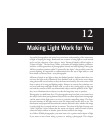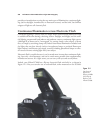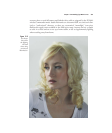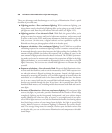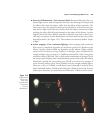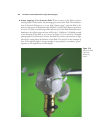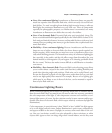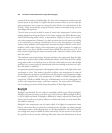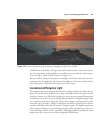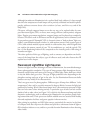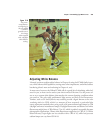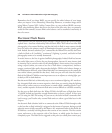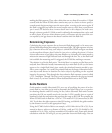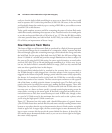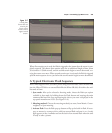excessively blue outdoors in full daylight. Yet, these color temperature variations are real
and the sensor is not fooled. To capture the most accurate colors, we need to take the
color temperature into account in setting the color balance (or white balance) of the
D7000—either automatically using the camera’s smarts or manually using our own
knowledge and experience.
The only time you need to think in terms of actual color temperature is when you’re
making adjustments using the Choose Color Temp. setting in the White Balance entry
within the Shooting menu (which, as described in Chapter 8, allows you to dial in
exact color temperatures, if known). So, those occasions are the only times you’re likely
to be confused by a seeming contradiction in how color temperatures are named:
warmer (more reddish) color temperatures (measured in degrees Kelvin) are the lower
numbers, while cooler (bluer) color temperatures are higher numbers. It might not
make sense to say that 3,400K is warmer than 6,000K, but that’s the way it is. If it
helps, think of a glowing red ember contrasted with a white-hot welder’s torch, rather
than fire and ice.
The confusion comes from physics. Scientists calculate color temperature from the light
emitted by a mythical object called a black body radiator, which absorbs all the radiant
energy that strikes it, and reflects none at all. Such a black body not only absorbs light
perfectly, but it emits it perfectly when heated (and since nothing in the universe is per-
fect, that makes it mythical).
At a particular physical temperature, this imaginary object always emits light of the same
wavelength or color. That makes it possible to define color temperature in terms of
actual temperature in degrees on the Kelvin scale that scientists use. Incandescent light,
for example, typically has a color temperature of 3,200K to 3,400K. Daylight might
range from 5,500K to 6,000K. Each type of illumination we use for photography has
its own color temperature range—with some cautions. The next sections will summa-
rize everything you need to know about the qualities of these light sources.
Daylight
Daylight is produced by the sun, and so is moonlight (which is just reflected sunlight).
Daylight is present, of course, even when you can’t see the sun. When sunlight is direct,
it can be bright and harsh. If daylight is diffused by clouds, softened by bouncing off
objects such as walls or your photo reflectors, or filtered by shade, it can be much dim-
mer and less contrasty.
Daylight’s color temperature can vary quite widely. It is highest in temperature (most
blue) at noon when the sun is directly overhead, because the light is traveling through
a minimum amount of the filtering layer we call the atmosphere. The color tempera-
ture at high noon may be 6,000K. At other times of day, the sun is lower in the sky and
the particles in the air provide a filtering effect that warms the illumination to about
David Busch’s Nikon D7000 Guide to Digital SLR Photography402




